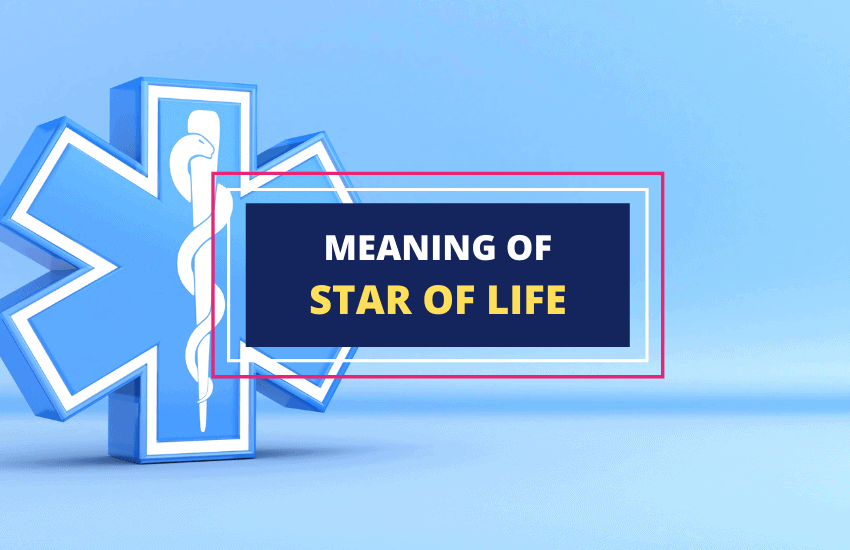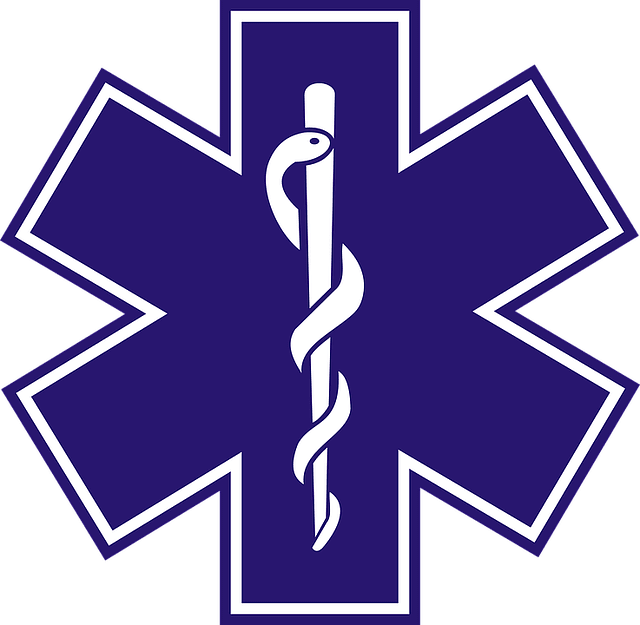
Table of Contents
If you have ever found yourself in a medical emergency or been nearby when someone needed to be attended to by emergency responders, then you’ve likely encountered this symbol. The blue cross with six bars and a snake weaved on a staff has become a widespread symbol of health, hence the name the star of life. Here is what you need to know about the blue star of life.
What is the Star of Life?
Issued by the American Commissioner of Patents and Trademarks in 1977, this symbol was created because of the need for a universal symbol for the Emergency Medical Services in the United States.
It was issued to the National Highway Traffic Safety Administration (NHTSA) as a way to ensure that only medical personnel certified by the American Medical Associations was able to offer medical care on roads and highways. The star of life came as a replacement to the initially used orange cross, which was often mixed up with the similar Red Cross symbol.
Symbolism and Meaning of the Star of Life

The star of life is associated with different meanings, with each aspect of the symbol representing an important medical concept.
- Snake and Staff – Known as the Rod of Asclepius, a Greek god of medicine, the symbol of the snake coiled around a staff represents authority, healing, and rejuvenation. The snake stands for renewal, a symbolism that stems for the fact that it sheds its skin and renews itself.
- The Star – The star has six bars, each representing an important attribute in emergency care. These attributes are:
- Detection The first vital aspect in the case of an emergency is the detection of the problem, the extent of the problem, and identifying ways in which people on site can protect themselves from any danger around them. This role is usually undertaken by civilians who are often the first responders in such situations.
- Reporting After the first responders have identified the problem and taken measures to protect themselves and others, they will call in for professional help, explain the situation, and provide their location after which an emergency medical dispatch is sent to the scene.
- Response Calling for help is not the end of the first responders’ duty. While awaiting professional help, the civilians are required to try to the most of their ability to administer first aid to those that need it.
- On-scene care This is usually the first role performed by the professional medics. The Emergency Medical Services (EMS) staff on arrival provide as much medical care as they possibly can on the scene.
- Care in transport When a patient needs much more specialized care than can be offered on the scene, EMS staff transport them to the hospital. While in transit, the EMS staff continue to utilize the medical equipment attached to their mode of transport to help the patient and administer as much medical care as possible.
- Transfer to definitive care This usually is the stage at which emergency medical personnel conclude their roles. At this point, the patient is already at the hospital whereby they can receive the appropriate medical care, personalized to their needs. The EMS staff hand the patient over to the doctors and await the next dispatch.
Myths Associated with the Star of Life
Greek mythology recognizes Asclepius as the son of Apollo, who was trained in the art of healing by Chiron the centaur. His skills of healing and medicine were so powerful, that Zeus slew him afraid that his skills would make humans immortal. Nevertheless, he still came to be known as the peerless physician.
The ancient Greek poem The Iliad by Homer further relates healing with Asclepius by recognizing him as the father of Podaleirus and Machaeon. These two sons of Asclepius are known to have been the Greek physicians during the Trojan war.
As Asclepius’ reputation as a great healer and physician grew, the cult of Asclepius began in Thessaly. His followers believed that he could affect curses and prescribe cures to sickness in dreams.
In the Bible, Numbers 21:9, Moses erected a bronze snake on a pole as a way of curing The Israelites who were bitten by desert snakes. The story indicates that the snakes were sent by God to punish the Israelites who had complained about manna sent to them freely.
Where is the Star of Life Used?
- The Symbol can be seen on ambulances and helicopters designated for emergency medical services.
- When seen on a map, the symbol is an indication of where one can find emergency medical services.
- When seen adorned by a medical professional, the symbol is an indication that the said person is either a certified emergency care responder or has a job function associated with the agency.
- When seen on a bracelet or a patch, the symbol is an indicator of a patient with a health condition that may necessitate emergency care. This is usually accompanied by other necessary information.
- When seen on books and other training materials, the symbol is a telling sign of work certified for emergency response training.
- When seen on medical equipment, the symbol is an indicator of the capacity of the said equipment to provide emergency medical services.
- Seen on an elevator door, the symbol is an indication that the said elevator has the capacity to fit a stretcher in case of an emergency.
- Seen drawn as a tattoo, this symbol is an indication of devotion to saving lives no matter the circumstances.
Wrapping Up
The star of life is a very important symbol which not only symbolizes healing, but also serves as an identifying mark for certain medical groups. This is important because, in a medical emergency, one is able to know where to go or who to go to for professional services.








